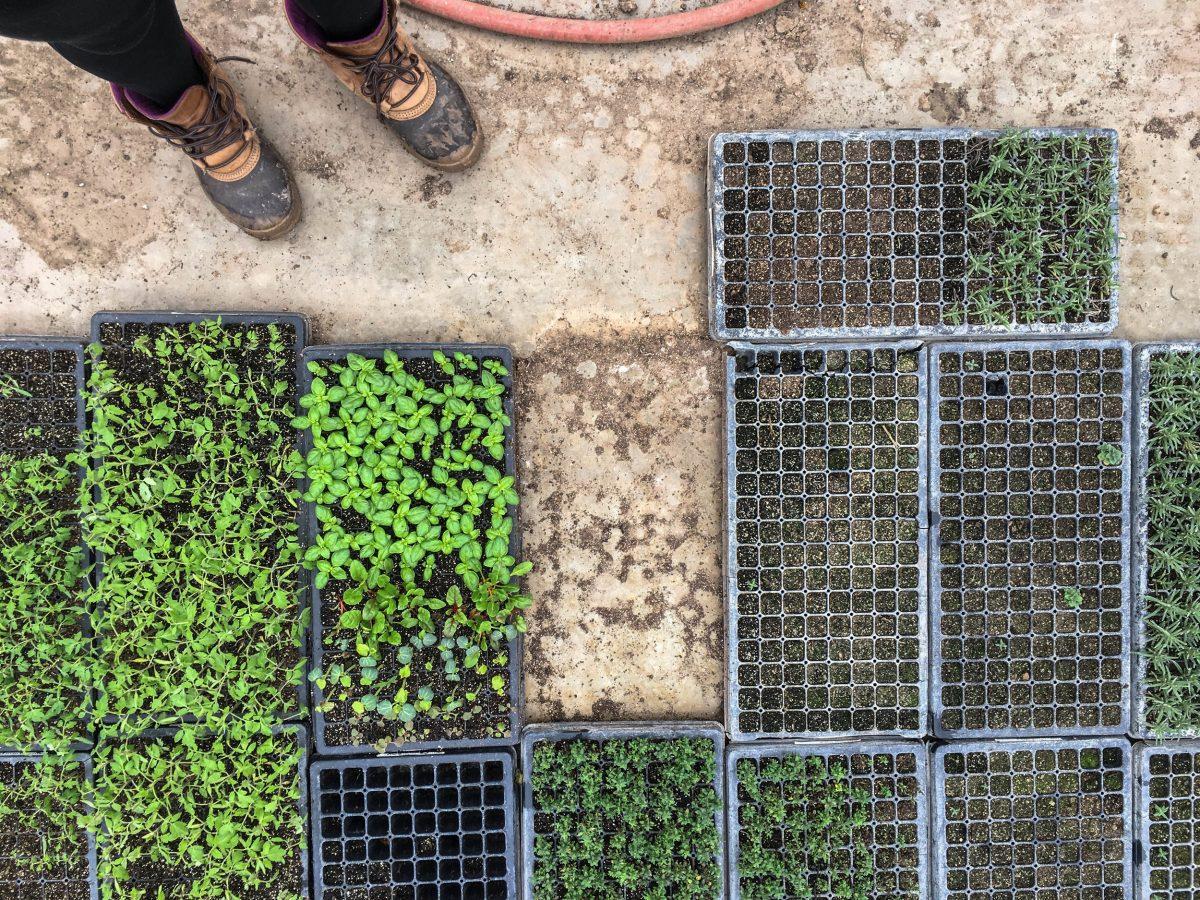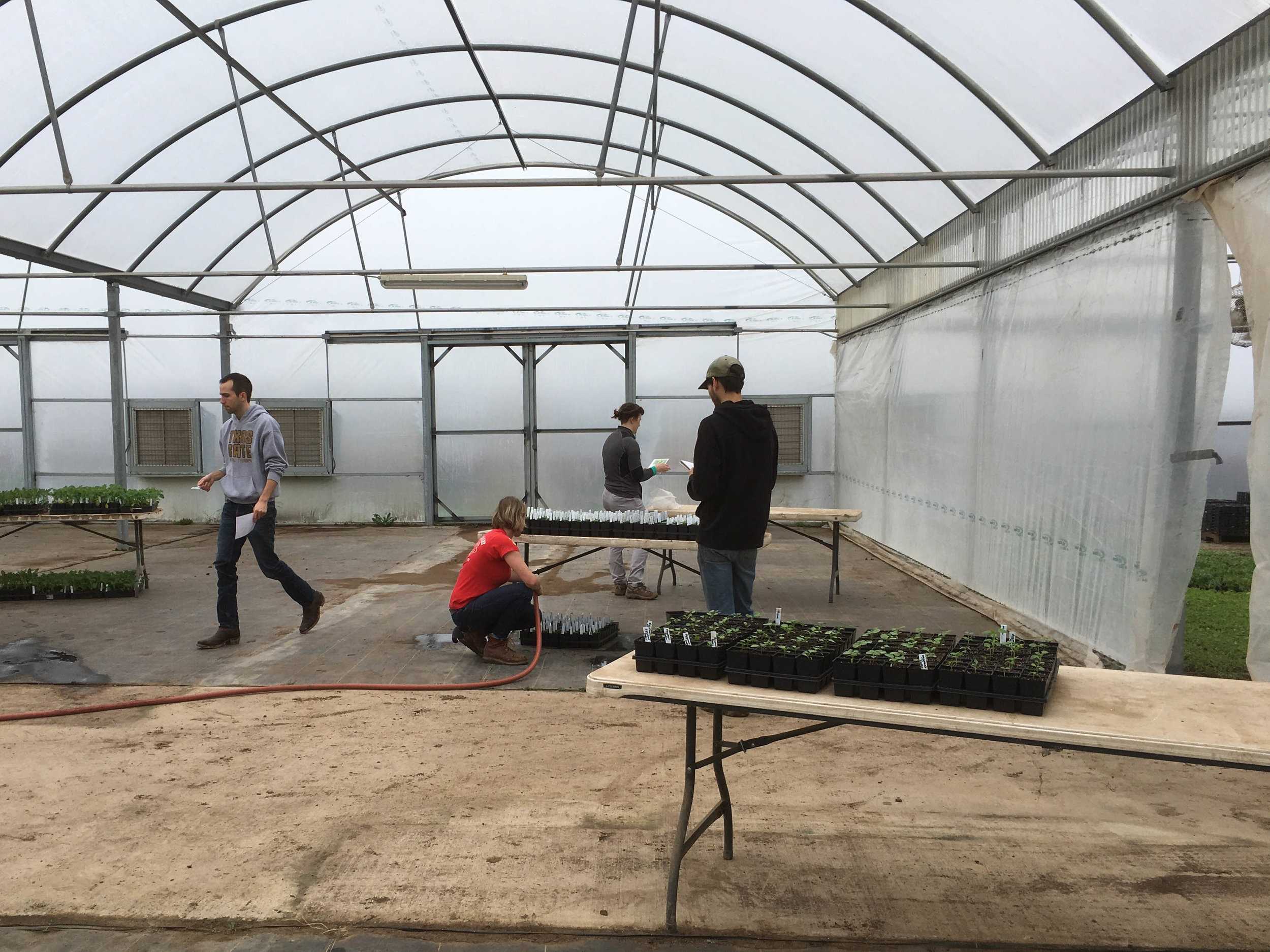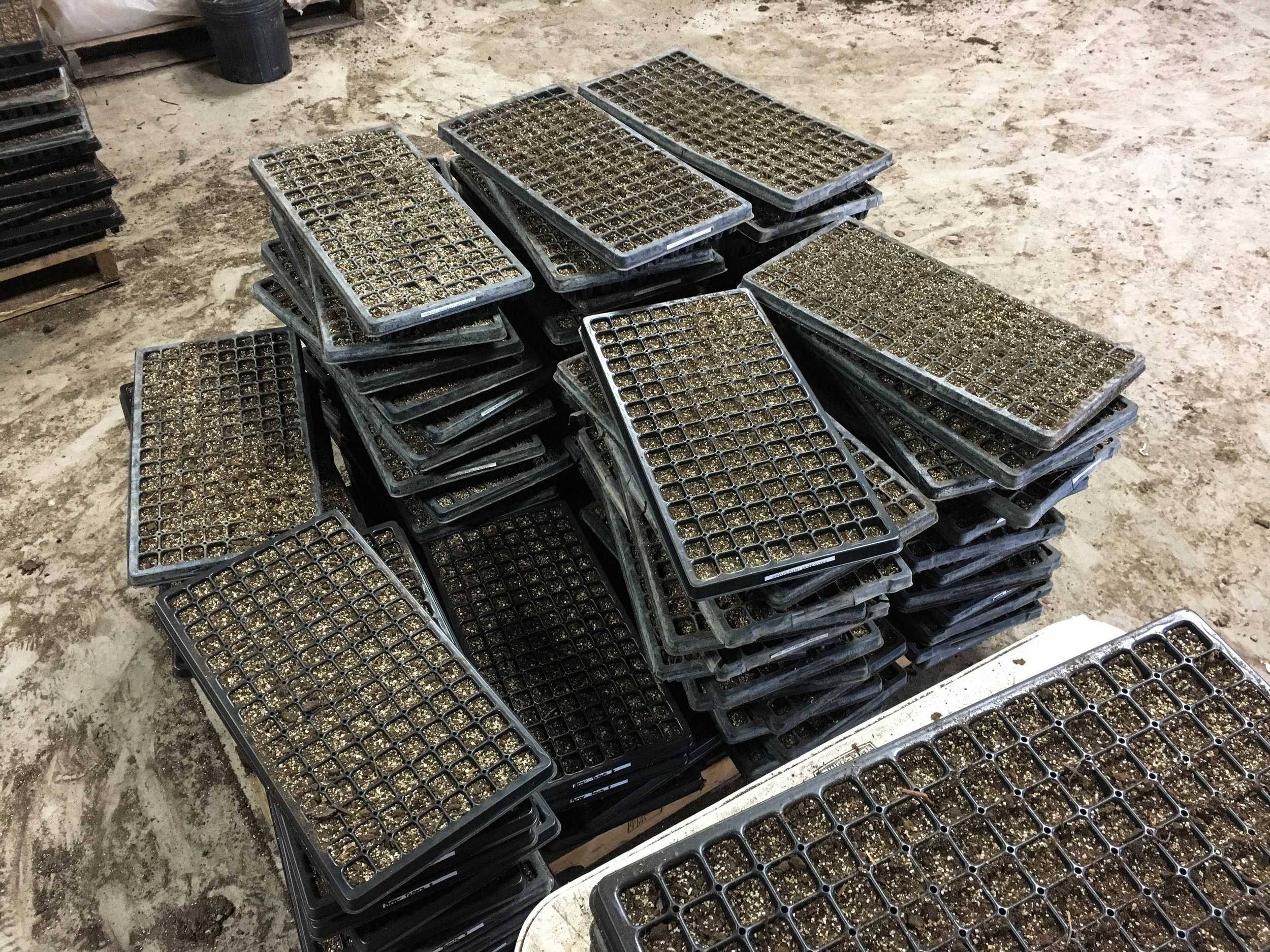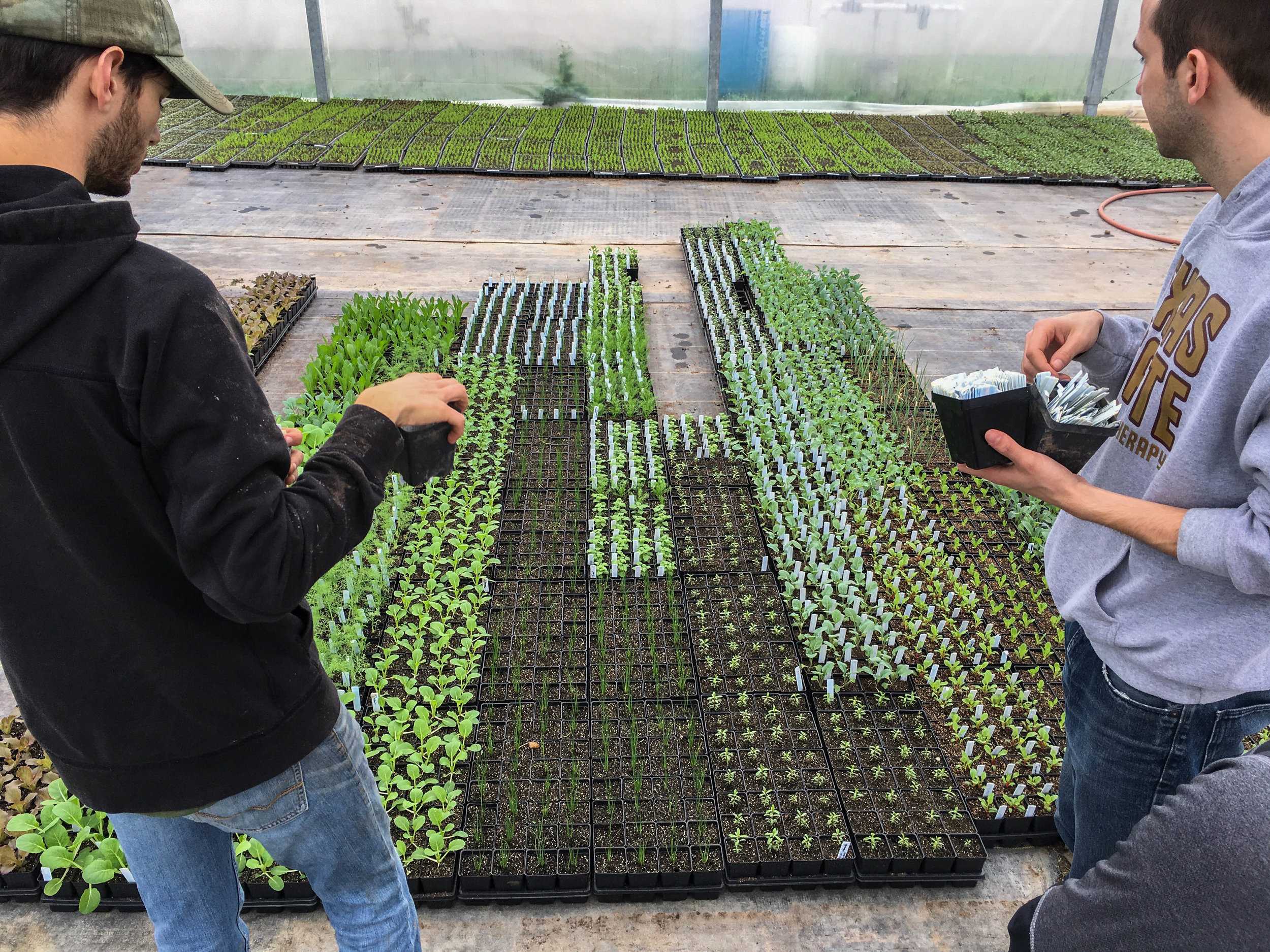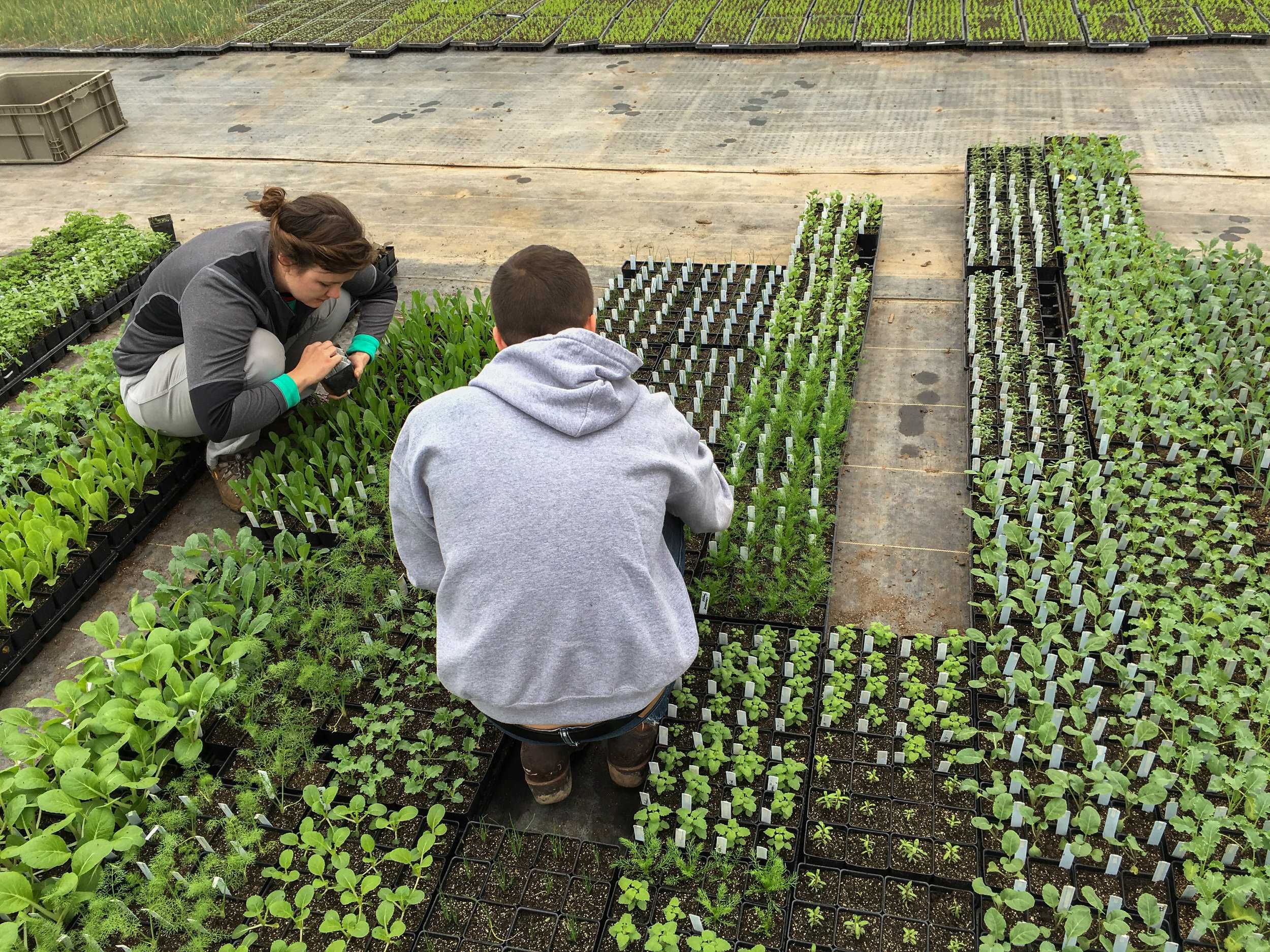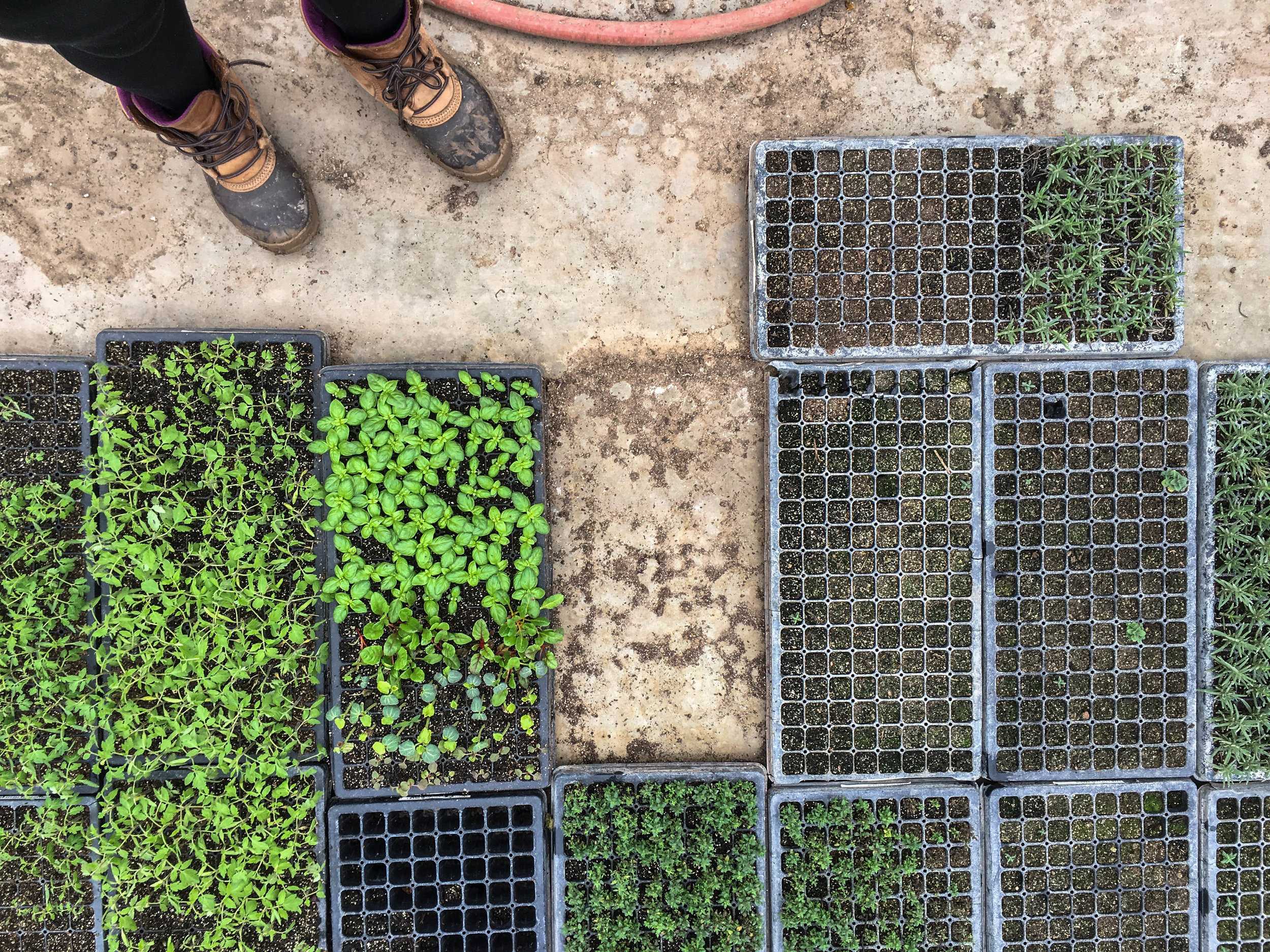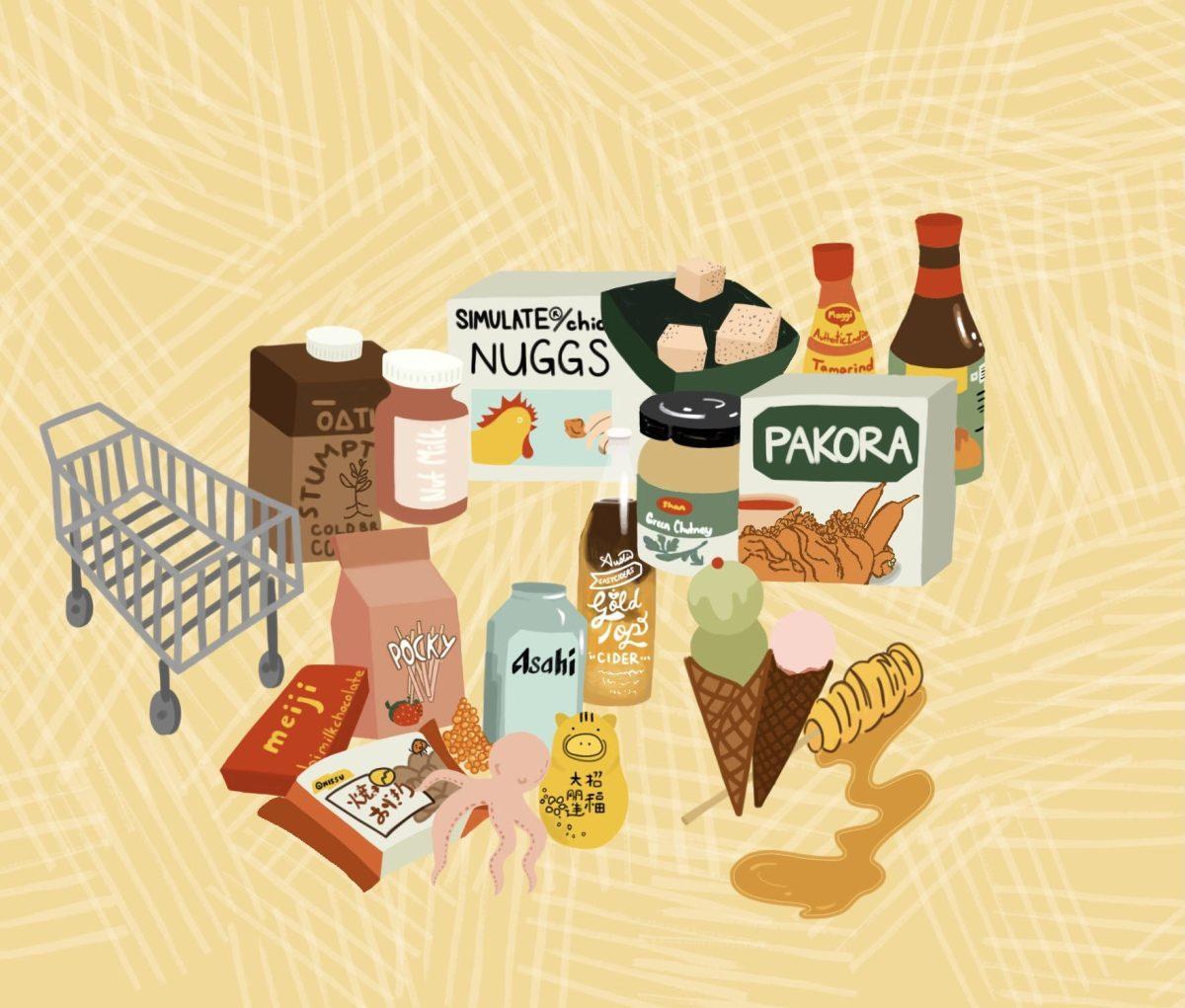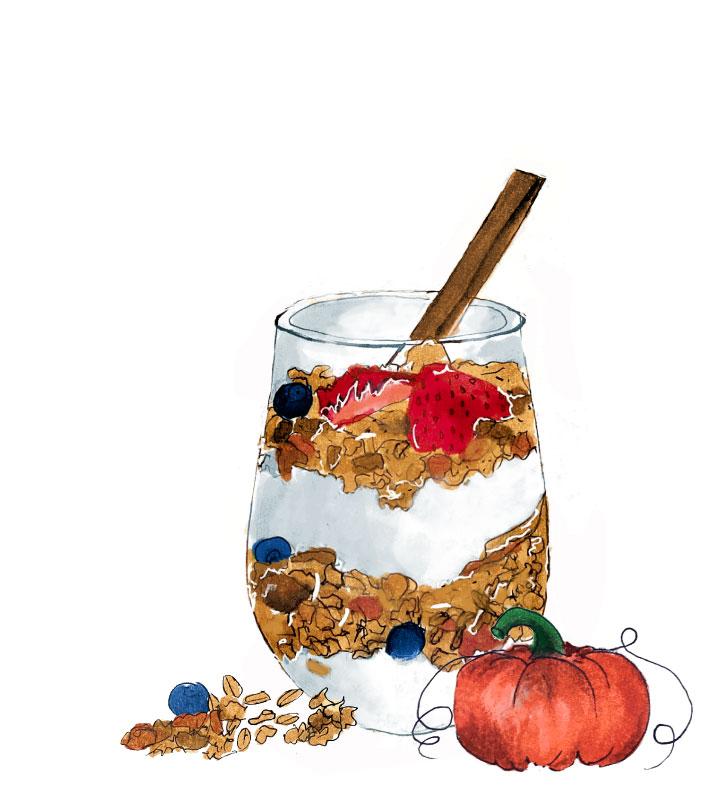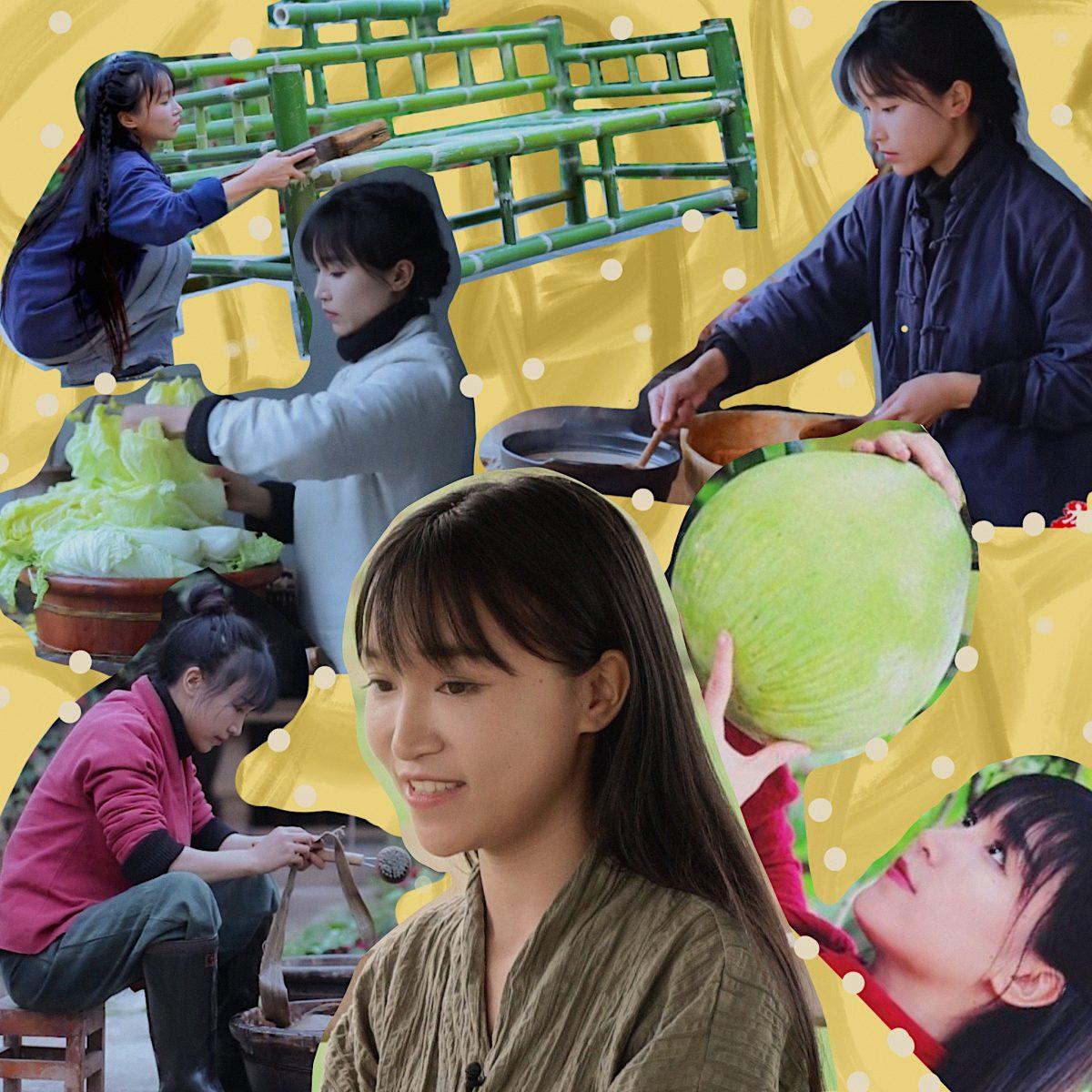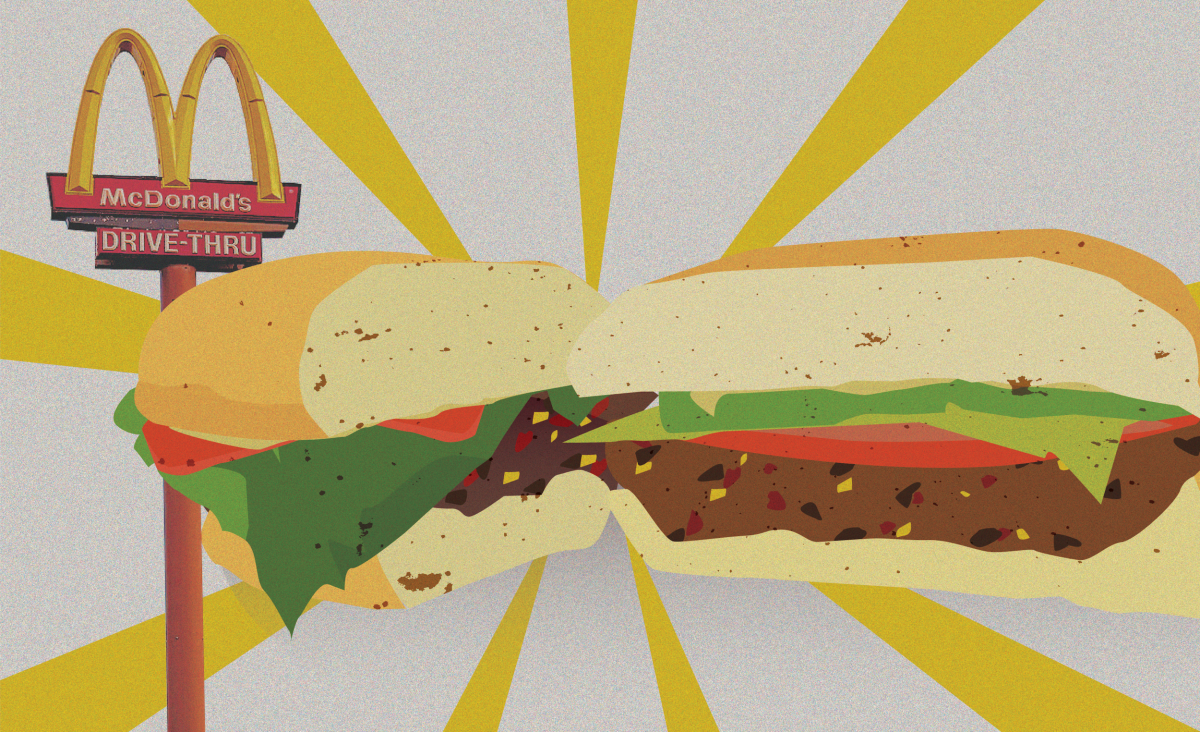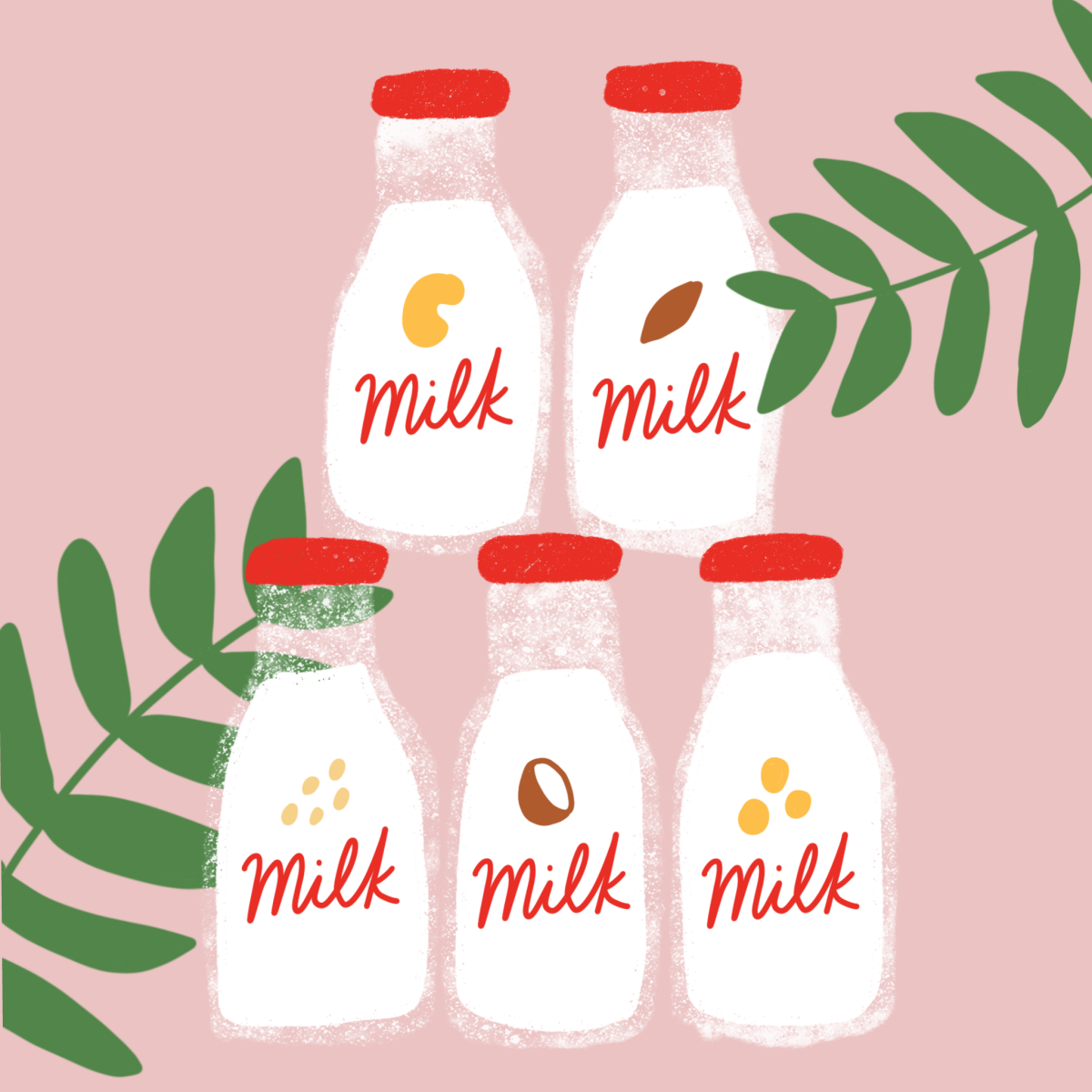Farmworkers and volunteers weed, water and organize the plants in preparation for tomorrow’s transplant sale.
Driving up to the Garfield farm of Johnson’s Backyard Garden, I was grateful for two things: my jeep and my boots. After five days straight of rain, the parking lot was a boggy mud pit, and trudging through the oozing earth, it was clear I had left the urban maze of Austin behind me for a slower and simpler world.
Story and Photos by Christiana Sullivan
Brent Johnson started Johnson’s Backyard Garden in 2004. At the time it operated as a small farmers market operation, selling organic vegetables from his eponymous East Austin backyard garden. Since then, the Garden has blossomed into a full-fledged farm and Community Supported Agriculture program serving customers all over the state. Their Garfield farm, one of the Garden’s two properties, initially consisted of 40 acres of farmland in 2010, but by continually acquiring acreage to meet a growing demand for their organic produce, the owners have grown the farm to now contain over 200 acres of land.
It was on these premises that I was volunteering. However, I was not, as you might imagine, working out in those endless fields, harvesting the bounty of the land with my bare hands – the day was much too wet for that.
Instead, I was in the farm’s greenhouses, pursuing smaller, but perhaps no less meaningful tasks alongside two other volunteers. Sometimes separately and other times together, we would plant seedlings, weed young transplants, and make labels, all with the soft, nostalgic tunes of a Motown playlist playing from the speakers.
Volunteers began their workday at the farm planting seeds of vegetables, such as heirloom tomatoes, into stacks of trays with small pockets of soil for each plant. This is wonderfully tedious and mind-consuming work.
As I sat, scooting microscopic seeds into a tray divided into tiny squares filled with soil, “Stand By Me” by Ben E. King came on. I then became aware of the wonderful atmosphere of serenity that surrounded me. King’s gospel-infused vocals combined with my absorbing, repetitive task, created a much needed distraction and sense of peace after a hectic week of assignments, grades and rent payments.
Apparently, I’m not the only one who has experienced volunteering at the farm as a form of therapy. Greenhouse manager Kirby Peters, who coordinated our small volunteer team, told me that many people volunteer because the hands-on work is so restorative.
Greenhouse manager Kirby Peters instructs volunteers on labeling the plants.
As I continued through my half day of volunteer work at the farm, I began to better understand the full extent of the Garden’s ability and mission to restore relationships.
I experienced firsthand how the Garden restores the relationship of humans to the earth. The Garden farms organically in ways that honor the soil and use the earth’s resources sustainably. By working with soil by hand, I also personally experienced a reinvigorated relationship with the earth. I realized that no matter how aware you are of environmental issues, true awareness of the environment first comes from physical interaction with the earth.
Volunteers Jace and Hillary label a variety of plants in preparation of the transplant sale.
Secondly, the Garden actively aims to restore the relationship between people and their food. In an interview with farm manager Becky Hume, she says they have an attitude of transparency with the public so people can know where there food is coming from.“It’s not this convoluted system of things coming from really far away,” she says. “I think people feel better when they have access, when they can actually come here and meet us and see where their food is coming from, they feel better about feeding it to their families every day.”
They have also been working with AISD to start “Fresh Produce Fridays,” where they supply their vegetables in participating schools to introduce the kids to the idea of eating locally and healthily. This is work begins to restore one of the food systems in our society that most needs fixing: those in public schools. “Fresh Produce Fridays” are a small start to restoring the relationship between urban youth and their food.
The Garden also seeks to build community. They do this through their dynamic engagement with the public via farmers markets, providing volunteering opportunities, hosting sales and community events at the farm, and, notably, their Community Supported Agriculture, or CSA, program.“We recognize that we’re here to serve the community. We’re here to grow for the community. So, we try to find as many ways as possible to have them engaged and feel like a part of the farm,” Hume says. A CSA program is a direct partnership between customers and the farm in which the customer pays in advance for a share of the farm’s harvest. The farm then sends the consumer a weekly or biweekly delivery of fresh produce. Hume explains, “So the whole premise around the CSA model is that each one of our CSA members is like a mini-shareholder in the farm. They’re giving us money every week to supply them with these fresh vegetables.” She said that their CSA program is still the foundation of the Garden with over 1,500 members, making it one of the largest CSA programs in the country.
By 1:00 pm, I arrived at the Garden’s packing shed on their other property to pick up my vegetable share for the morning’s work. I was nonchalantly presented with a large box filled with an assortment of lettuces, carrots, radishes, turnips and a parky bundle of kale. Surprised, I double-checked this was all for me, and began furtively transferring all the goods into my canvas sack.
Boots are useful when working on a farm, especially when it rains all week and everything turns to mud. Also, young transplants sit in their trays ready to be sold the next day.
Since then I’ve managed to make an assortment of salads, some garlicky braised kale, and a dish of roasted carrots. I’ve never cooked turnips, so I’ll have to experiment with them, but that’s all part of the fun. It’s like spending a week on “Chopped”, but without all the pressure.
Volunteering at the farm has helped me reconnect with the earth, and reconnect with others. Working there creates state of being where you’re just focused on what’s before you. Maybe we could all use a morning like that, where we take a break from our phones and spend some time just with things that are real: people, plants, nature. Even if you don’t walk away with a blissful experience such as mine, you’ll walk away with a bag of groceries for the week. So what do you have to lose?































